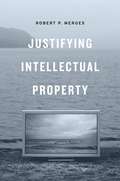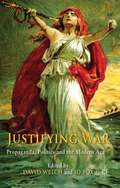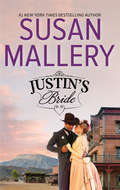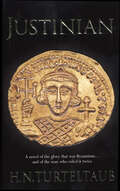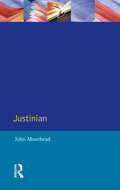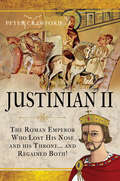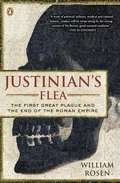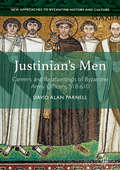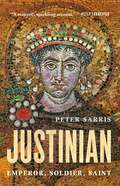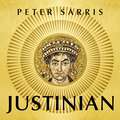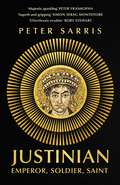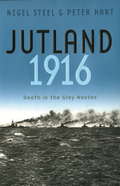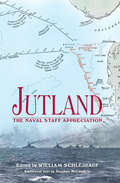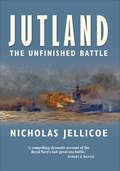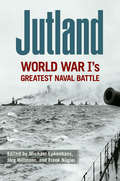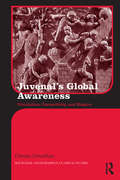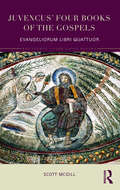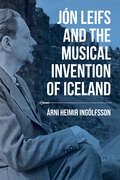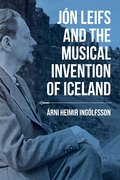- Table View
- List View
Justifying Intellectual Property
by Robert P. MergesWhy should a property interest exist in an intangible item? In recent years, arguments over intellectual property have often divided proponents—who emphasize the importance of providing incentives for producers of creative works— from skeptics who emphasize the need for free and open access to knowledge. In a wide-ranging and ambitious analysis, Robert P. Merges establishes a sophisticated rationale for the most vital form of modern property: IP rights. His insightful new book answers the many critics who contend that these rights are inefficient, unfair, and theoretically incoherent. But Merges’ vigorous defense of IP is also a call for appropriate legal constraints and boundaries: IP rights are real, but they come with real limits. Drawing on Kant, Locke, and Rawls as well as contemporary scholars, Merges crafts an original theory to explain why IP rights make sense as a reward for effort and as a way to encourage individuals to strive. He also provides a novel explanation of why awarding IP rights to creative people is fair for everyone else in society, by contributing to a just distribution of resources. Merges argues convincingly that IP rights are based on a solid ethical foundation, and—when subject to fair limits—these rights are an indispensable part of a well-functioning society.
Justifying War
by David Welch Jo FoxA new assessment of the debates about Just War in the twentieth and twenty-first centuries, from the imperial wars of the nineteenth century through the age of total war, the evolution of human rights discourse and international law, to proportionality during the Cold War and the redefinition of authority with the ascendancy of terror groups.
Justin's Bride
by Susan MalleryFall back in love with 1800s Kansas in Susan Mallery's fan-favorite tale of love, loss, and redemption. Justin Kincaid is the local bad-boy-turned-sheriff, and now he's got to prove himself to his people and his town. When a saloon girl is murdered, it's up to him to lead the investigation and to find a home for the dead woman's young daughter. But what he hadn't counted on was Megan, the only woman he's ever loved, volunteering to take in the young girl... Megan Bartlett had all but given up on ever seeing Justin Kincaid again when he returned to assume the sheriff's position. And the man who returns--the man with a bitter, mocking smile--is not the man she remembers. But when she notices how tender he is with the orphaned girl, she can't help but see glimpses of the man she fell in love with, and she wonders if life has granted them a second chance after all...
Justinian
by H. N. TurteltaubFrom one of the nation's leading Byzantine scholars comes a fictional look at the vicious reign of Justinian II, Emperor of the Romans in the seventh century and one of history's most desperate and brutal rulers."Electrifying...An artfully styled narrative and painstaking attention to historical detail vivify this mesmerizing account of one of history's most remarkable rulers." --BooklistAt the Publisher's request, this title is being sold without Digital Rights Management Software (DRM) applied.
Justinian (The Medieval World)
by John MoorheadThe reign of Justinian (527--65) was a key phase in the transition from the Roman empire of classical times to the Byzantine empire of the Middle Ages. Justinian himself, born of peasant stock in a provincial backwater, was one of the greatest rulers yet, despite prodigious achievements, he remained an outsider in the sophisticated society of Constantinople. Here, John Moorhead reinterprets Justinian as man and monarch, together with his formidable empress, the ex-actress Theodora, and assesses the evidence from their time for the evolution of a distinctively medieval world.
Justinian II: The Roman Emperor Who Lost his Nose and his Throne and Regained Both
by Peter CrawfordJustinian II became Roman emperor at a time when the Empire was beset by external enemies. His forces gained success against the Arabs and Bulgars but his religious and social policies fuelled internal opposition which resulted in him being deposed and mutilated (his nose was cut off) in 695. After a decade in exile, during which he strangled two would-be assassins with his bare hands, he regained power through a coup d’etat with the backing of the erstwhile Bulgar enemy (an alliance sealed by the marriage of his daughter, Anastasia). His second reign was seemingly harsher and again beset by both external and internal threats and dissension over doctrinal matters. An energetic and active ruler, his reign saw developments in various areas, including numismatics, administration, finance and architecture, but he was deposed a second time in 711 and beheaded. Drawing on all the available evidence and the most recent research, Peter Crawford makes a long-overdue re-assessment of Justinian’s colorful but troubled career and asks if he fully deserves his poor reputation.
Justinian's Flea: The First Great Plague and the End of the Roman Empire
by William RosenThe epic story of the collision between one of nature?s smallest organisms and history?s mightiest empire During the golden age of the Roman Empire, Emperor Justinian reigned over a territory that stretched from Italy to North Africa. It was the zenith of his achievements and the last of them. In 542 AD, the bubonic plague struck. In weeks, the glorious classical world of Justinian had been plunged into the medieval and modern Europe was born. At its height, five thousand people died every day in Constantinople. Cities were completely depopulated. It was the first pandemic the world had ever known and it left its indelible mark: when the plague finally ended, more than 25 million people were dead. Weaving together history, microbiology, ecology, jurisprudence, theology, and epidemiology, Justinian?s Flea is a unique and sweeping account of the little known event that changed the course of a continent. .
Justinian's Men: Careers and Relationships of Byzantine Army Officers, 518-610 (New Approaches to Byzantine History and Culture)
by David Alan ParnellThis book explores the professional and social lives of the soldiers who served in the army of the Byzantine Empire in the sixth century. More than just a fighting force, this army was the setting in which hundreds of thousands of men forged relationships and manoeuvred for promotion. The officers of this force, from famous generals like Belisarius and Narses to lesser-known men like Buzes and Artabanes, not only fought battles but also crafted social networks and cultivated their relationships with their emperor, fellow officers, families, and subordinate soldiers. Looming in the background were differences in identity, particularly between Romans and those they identified as barbarians. Drawing on numerical evidence and stories from sixth-century authors who understood the military, Justinian’s Men highlights a sixth-century Byzantine army that was vibrant, lively, and full of individuals working with and against each other.
Justinian: Emperor, Soldier, Saint
by Peter SarrisA definitive new biography of the Byzantine emperor Justinian Justinian is a radical reassessment of an emperor and his times. In the sixth century CE, the emperor Justinian presided over nearly four decades of remarkable change, in an era of geopolitical threats, climate change, and plague. From the eastern Roman—or Byzantine—capital of Constantinople, Justinian&’s armies reconquered lost territory in Africa, Italy, and Spain. But these military exploits, historian Peter Sarris shows, were just one part of a larger program of imperial renewal. From his dramatic overhaul of Roman law, to his lavish building projects, to his fierce persecution of dissenters from Orthodox Christianity, Justinian&’s vigorous statecraft—and his energetic efforts at self-glorification—not only set the course of Byzantium but also laid the foundations for the world of the Middle Ages. Even as Justinian sought to recapture Rome&’s past greatness, he paved the way for what would follow.
Justinian: Emperor, Soldier, Saint
by Professor Peter SarrisThe definitive life story of the Roman Emperor who shaped modern times.In this groundbreaking new biography of Justinian, Peter Sarris gives us an intimate insight into both the Emperor and the man. We meet a man who from the humblest beginnings, rose to become ruler of much of the known world achieving an almost god-like status. An emperor who infused even the most mundane tasks with spiritual and religious significance. A gifted administrator obsessed with detail. A middle aged lover who fell for a dancing girl and changed the law so he could marry her, ruling with Empress Theodora by his side for over twenty years. A brilliant military strategist who was never a soldier. The challenges he faced - climate change, battles over culture and identity, the first recorded global pandemic -and many of the solutions he found to address them still resonate with us today. And his legacy remains all around us, in the massive building programme of which the most beautiful manifestation is surely Hagia Sophia; in our legal systems through the codification of the Corpus juris civilis; and in our culture and history by making a fundamental contribution to both the formation of Christendom and the emergence of Islam. In this tour de force Peter Sarris shows us that in all his complexity and contradictions Justinian was, in many ways, a very modern Emperor.(P)2023 Hodder & Stoughton Limited
Justinian: Emperor, Soldier, Saint
by Professor Peter Sarris'A majestic, sparkling account of one of the most important rulers in history . . . this is modern history writing at its finest' Peter Frankopan'Superb and gripping. Epic historical biography that brings the emperor to life . . . filled with new ideas and revelations' Simon Sebag Montefiore'Effortlessly erudite, lucidly written, with a sharp eye for the telling detail, Sarris has written the great biography of the greatest of the Byzantine emperors' Rory StewartIn this groundbreaking new biography of Justinian, Peter Sarris gives us an intimate insight into both the Emperor and his times. We meet a man who from the humblest beginnings, rose to become ruler of much of the known world achieving an almost god-like status. An emperor who infused even the most mundane tasks with spiritual and religious significance. A gifted administrator obsessed with detail. A middle aged lover who fell for a dancing girl and changed the law so he could marry her, ruling with Empress Theodora by his side for over twenty years. A brilliant military strategist who was never on the frontline. The challenges he faced - climate change, battles over culture and identity, the first recorded global pandemic -and many of the solutions he found to address them still resonate with us today. And his legacy remains all around us, in the massive building programme of which the most beautiful manifestation is surely Hagia Sophia; in our legal systems through the codification of the Corpus juris civilis; and in our culture and history by making a fundamental contribution to both the formation of Christendom and the emergence of Islam. In this tour de force Peter Sarris shows us that in all his complexity and contradictions Justinian was, in many ways, a very modern Emperor.
Justus S. Stearns: Michigan Pine King and Kentucky Coal Baron, 1845-1933 (Great Lakes Books Series)
by Michael W. NagleNear the turn of the twentieth century, "Pine King" Justus S. Stearns was Michigan's largest producer of manufactured lumber and the owner of a prosperous coal mining operation headquartered in Stearns, Kentucky, a town he founded. Over the course of his career, Stearns would own at least thirty manufacturing businesses--making everything from finished lumber to kitchen utensils, game boards, and motors--as well as hotels, a railroad, and a power company. He was also an active member of the Republican Party who served one term as Michigan's secretary of state and a philanthropist who gave a great deal of his wealth to causes in both Michigan and Kentucky. In Justus S. Stearns: Michigan Pine King and Kentucky Coal Baron, 1845-1933, author Michael W. Nagle details Stearns's astounding range of accomplishments and explores the influence of both paternalism and Social Darwinism in his business practices. Nagle begins by addressing key events in the first few decades of Stearns's life and his initial foray into the lumber industry. Subsequent chapters explore Stearns's political career, his timber operations in Wisconsin, and his coal, lumber, and railroad operations in Kentucky and Tennessee. Nagle also details the ancillary businesses that Stearns founded or purchased in the early twentieth century, even as his Stearns Salt & Lumber Company served as the anchor of his Michigan holdings, while Stearns Coal & Lumber did the same for his operations in Kentucky. The final chapter offers an overview and analysis of Stearns's lifetime of accomplishments, including his impact on the town of Ludington, Michigan, where he maintained a residence for over fifty years. Nagle makes extensive use of primary source material from several historical archives as well as contemporary newspaper accounts, court documents, company records, and other primary sources. American history scholars, as well as general readers interested in Michigan's lumbering era and Kentucky's mining history, will enjoy this biography of an exceptionally influential businessman.
Jutland, 1916: Death In The Grey Wastes (Sven Hassel War Classics)
by Peter Hart Nigel SteelDramatic, illustrated account of the biggest naval battle of the First World War.On 31 May, 1916, the great battle fleets of Britain and Germany met off Jutland in the North Sea. It was a climactic encounter, the culmination of a fantastically expensive naval race between the two countries, and expectations on both sides were high. For the Royal Navy's Grand Fleet, there was the chance to win another Trafalgar. For the German High Seas Fleet, there was the opportunity to break the British blockade and so change the course of the war. But Jutland was a confused and controversial encounter. Tactically, it was a draw; strategically, it was a British victory.Naval historians have pored over the minutiae of Jutland ever since. Yet they have largely ignored what the battle was actually like for its thousands of participants. Full of drama and pathos, of chaos and courage, JUTLAND, 1916 describes the sea battle in the dreadnought era from the point of view of those who were there.
Jutland, 1916: Death in the Grey Wastes
by Peter Hart Nigel SteelDramatic, illustrated account of the biggest naval battle of the First World War.On 31 May, 1916, the great battle fleets of Britain and Germany met off Jutland in the North Sea. It was a climactic encounter, the culmination of a fantastically expensive naval race between the two countries, and expectations on both sides were high. For the Royal Navy's Grand Fleet, there was the chance to win another Trafalgar. For the German High Seas Fleet, there was the opportunity to break the British blockade and so change the course of the war. But Jutland was a confused and controversial encounter. Tactically, it was a draw; strategically, it was a British victory.Naval historians have pored over the minutiae of Jutland ever since. Yet they have largely ignored what the battle was actually like for its thousands of participants. Full of drama and pathos, of chaos and courage, JUTLAND, 1916 describes the sea battle in the dreadnought era from the point of view of those who were there.
Jutland: The Naval Staff Appreciation
by William SchleihaufThe legendary hidden report on the Royal Navy&’s failures at the WWI Battle of Jutland is revealed for the first time in this transcribed edition. Jutland, the largest naval battle of the First World War, was the most controversial engagement in the Royal Navy&’s history. Falling well short of the total victory expected by the public, it sparked fierce debate among senior naval officers, many of whom had been directly involved in the battle. The first attempt to produce an objective record was delayed and heavily censored. That report was followed by a no-holds-barred critique of the fleet&’s performance intended for training purposes at the Naval Staff College. This became the now-infamous Naval Staff Appreciation, which was deemed too damaging to be published. All proof copies were ordered destroyed. Despite the orders, however, a few copies survived. Now this long-suppressed work is finally revealed in this edition featuring expert modern commentary and explanatory notes.
Jutland: The Unfinished Battle
by Nicholas JellicoeThis book not only re-tells the story of the battle from both a British and German perspective based on the latest research, but it also helps clarify the context of Germanys inevitable naval clash. It then traces the bitter dispute that ensued in the years after the smoke of war had cleared right up to his death in 1935, Admiral Jellicoe was embroiled in what became known as the Jutland Controversy.
Jutland: World War I's Greatest Naval Battle (Foreign Military Studies)
by Michael Epkenhans Frank Nägler Jörg Hillmann&“The essential reappraisal of this seminal event in twentieth-century naval history . . . a &‘must have&’ book for the Great War enthusiasts.&” —Lone Star Review After months of skirmishes between Britain&’s Royal Navy Grand Fleet and the German Navy&’s outnumbered High Seas Fleet, conflict erupted on May 31, 1916, in the North Sea near Jutland, Denmark, in what would become the most formidable battle in the history of the Royal Navy. In Jutland, international scholars reassess the strategies and tactics employed by the combatants as well as the political and military consequences of their actions. Most previous English-language military analysis has focused on British admiral Sir John Jellicoe, who was widely criticized for excessive caution and for allowing German vice admiral Reinhard Scheer to escape; but the contributors to this volume engage the German perspective, evaluating Scheer&’s decisions and his skill in preserving his fleet and escaping Britain&’s superior force. Together, the contributors lucidly demonstrate how both sides suffered from leadership that failed to move beyond outdated strategies of limited war between navies and to embrace the total war approach that came to dominate the twentieth century. The role of memory—comparing the way the battle has been portrayed in England and Germany—is also examined. Jutland is &“suited not only for scholars, but also for a wider audience interested in knowing more about both the war at sea in World War I and its greatest contest&” (Eric Osborne, author of The Battle of Heligoland Bight). &“The documentation and scholarship reflected in these articles is outstanding.&”—Paul Halpern, author of A Naval History of World War I
Juvenal
by Lindsay Watson Patricia WatsonJuvenal's sixth Satire is a masterpiece of comic hyperbole, an outrageous rant against women and marriage which, in its breadth and density, represents the high point of the misogynistic literature of classical antiquity. The Introduction situates Juvenal within the wider tradition of Roman satire, interrogates afresh the poem's architecture and recurrent themes, shows how Juvenal systematically attributes to his monstrous women the inverse of the Roman wife's canonical virtues, traces the various literary currents which infuse the Satire, and lastly addresses the much-discussed issue of the poetic voice or persona from a sociohistorical as well as a theoretical perspective. Above all, the commentary strives to locate Juvenal in his historical, literary and cultural context, while simultaneously affording assistance with the nuts and bolts of the Latin, and always keeping in view two key questions: what was Juvenal's purpose in writing the Satire? How seriously was it meant to be taken?
Juvenal's Global Awareness: Circulation, Connectivity, and Empire (Routledge Monographs in Classical Studies)
by Osman UmurhanIn Juvenal’s Global Awareness Osman Umurhan applies theories of globalization to an investigation of Juvenal’s articulation and understanding of empire, imperialism and identity. Umurhan explains how the increased interconnectivity between different localities, ethnic and political, shapes Juvenal’s view of Rome as in constant flux and motion. Theoretical and sociological notions of deterritorialization, time-space compression and the rhizome inform the satirist’s language of mobility and his construction of space and place within second century Rome and its empire. The circulation of people, goods and ideas generated by processes of globalization facilitates Juvenal’s negotiation of threats and changes to Roman institutions that include a wide array of topics, from representatios of the army and food to discussions of cannibalism and language. Umurhan’s analysis stresses that Juvenalian satire itself is a rhizome in both function and form. This study is designed for audiences interested in Juvenal, empire and globalization under Rome.
Juvencus' Four Books of the Gospels: Evangeliorum Libri Quattuor (Routledge Later Latin Poetry)
by Scott McGillJuvencus’ Evangeliorum libri IV, or "The Four Books of the Gospels," is a verse rendering of the gospel narrative written ca. 330 CE. Consisting of around 3200 hexameter lines, it is the first of the Latin "Biblical epics" to appear in antiquity, and the first classicizing, hexameter poem on a Christian topic to appear in the western tradition. As such, it is an important text in literary and cultural history. This is the first English translation of the entire poem. The lack of a full English translation has kept many scholars and students, particularly those outside of Classics, and many educated general readers from discovering it. With a thorough introduction to aid in the interpretation and appreciation of the text this clear and accessible English translation will enable a clearer understanding of the importance of Juvencus’ work to later Latin poetry and to the early Church.
Jya Darekne Pahochavu J Che
by Kakasaheb Kalelkarજન્મમૃત્યુનો અનુભવ દરેક માણસને છે જ. યથાકાળે એ મળે જ છે. મારે પણ કેટલાંય સગાંવહાલાંને અને આદરણીય સત્પુરુષોને સ્મશાન સુધી પહોંચાડવા પડ્યાં છે. મારે મન સ્મશાન એ અત્યંત પવિત્ર જગ્યા છે. જ્યાં આપણે સગાંવહાલાંનાં શરીરની અંતિમ સેવા કરી એ સ્થાન આપણે માટે અત્યંત પવિત્ર જ હોવું જોઈએ. હિંદુ સંસ્કૃતિમાં મરી ગયેલા માણસનું શરીર અપવિત્ર મનાય છે. સ્મશાન વિશે આદર રાખવાને બદલે એ સ્થાનને આપણે અશુભ માનીએ છીએ એ મોટો દોષ છે. આ સ્થિતિ સુધારવા માટે મેં એક લેખમાળા લખી હતી. ‘સ્મશાનયાત્રા’ એવું જ નામ એને આપત. પણ વાચકોને એ ગમશે નહીં એવો વિચાર મનમાં આવવાથી શીર્ષક આપ્યું ‘જ્યાં દરેકને પહોંચવું જ છે.’ મુંબઈના ગુજરાતી સાપ્તાહિક ‘સુધા’માં આ લેખમાળા ક્રમશ: છપાઈ હતી. વાચકોએ એનું રસપૂર્વક સ્વાગત કર્યું હતું. મને એવો ખ્યાલ છે કે આ લેખમાળા માટે આ સુંદર શીર્ષક ‘સુધા’ના તંત્રીએ સુઝાડ્યું છે. મને એ શીર્ષક ખૂબ ગમ્યું. આ શીર્ષકથી સૂચવાય છે કે આપણો પણ ત્યાં હક્ક છે. સગાંવહાલાંને મૂકવા જઈએ ત્યારની ભાવના સામાન્ય રીતે લાગણીપ્રધાન હોય છે. સ્વદેશના રક્ષણને અર્થે જેઓ લડ્યા અને મર્યા એમની સ્મશાનયાત્રાનું દર્શન, ચિંતન અને સ્મરણ અદ્ભુત હોય છે. એ દર્શન દ્વારા માનવી સંસ્કૃતિની અનેક બાજુઓ ચિંતનનો વિષય બને છે. —કાકા કાલેલકર
Jya Raho Tya Mahekta Raho
by Nilam Parikhપ્રત્યેક જમાનાને એક ટેવ હોય છે. વીતી જવાની. અને વીતી ગયા પછી પોતીકી સુગંધ છોડતાં જવાની. આવી યુગસુગંધ અને ધૂપસુગંધનું નામ ‘ગાંધી’ છે. એ સુગંધના નશામાં અમારું બાળપણ વીત્યું છે. થોડીક ગાંધીસુગંધ અમારા ઘરમાં હતી થોડીક ફળિયામાં હતી થોડીક દેશમાં હતી. સાપ ગયા પછી રહી ગયેલા લિસોટામાં માંડ બચેલી ચાપુચપટી સ્મરણ-સજકણની આ વાત છે.
Jésus in Little America
by Jesus Sablan Leon GuerreroIn this book, Jesus Sablan Leon Guerrero narrates the story of his life, as well as the founding of the Bank of Guam. Comments by Manny Crisostomo, Editor, Latte Magazine: "He held me rapt with his stories of growing up in pre- and post-war Guam. He led me from one place to another and I followed along eagerly, asking a question to clarify a point or to get a more descriptive account. The time flew by and I wanted more."
Jón Leifs and the Musical Invention of Iceland (Music, Nature, Place Ser.)
by Árni Heimir IngólfssonA study of the influential Icelandic composer’s career and his work.In Jón Leifs and the Musical Invention of Iceland, Árni Heimir Ingólfsson provides a striking account of the dramatic career of Iceland’s iconic composer. Leifs (1899–1968) was the first Icelander to devote himself fully to composition at a time when a local music scene was only beginning to take form. He was a fervent nationalist in his art, fashioning an idiosyncratic and uncompromising “Icelandic” sound from traditions of vernacular music with the aim to legitimize Iceland as an independent, culturally empowered nation.In addition to exploring Leifs’s career, Ingólfsson provides detailed descriptions of Leifs’s major works and their cultural contexts. Leifs’s music was inspired by the Icelandic landscape and includes auditory depictions of volcanos, geysers, and waterfalls. The raw quality of his orchestral music is frequently enhanced by an expansive percussion section, including anvils, stones, sirens, bells, ships’ chains, shotguns, and cannons.Largely neglected in his own lifetime, Leifs’s music has been rediscovered in recent years and hailed as a singular and deeply original contribution to twentieth-century music. Jón Leifs and the Musical Invention of Iceland enriches our understanding and appreciation of Leifs and his music by exploring the political, literary and environmental contexts that influenced his work.“Composers of fearsome originality seldom have an easy path in the world. Jón Leifs, who translated the landscapes and legends of Iceland into sound, comes vividly to life in this brilliant, panoramic biography, his myriad personal and political conflicts delineated with clarity and candor. A major twentieth-century figure at last receives his due.” —Alex Ross, music critic for The New Yorker and author of The Rest Is Noise“Jón Leifs was the first major Icelandic composer and it is insane that most of his pieces were not performed or recorded until recently. His works were almost just a myth to us Icelanders and therefore this book is so magnificently important. . . . This book is incredibly well written and Árni Heimir’s analysis of the music is deeply satisfying. I listened to each work as it was being discussed, which turned the experience from black and white to color! An extraordinary achievement!” —Björk, singer/songwriter
Jón Leifs and the Musical Invention of Iceland (Music, Nature, Place)
by Árni IngólfssonIn Jón Leifs and the Musical Invention of Iceland, Árni Heimir Ingólfsson provides a striking account of the dramatic career of Iceland's iconic composer. Leifs (1899–1968) was the first Icelander to devote himself fully to composition at a time when a local music scene was only beginning to take form. He was a fervent nationalist in his art, fashioning an idiosyncratic and uncompromising 'Icelandic' sound from traditions of vernacular music with the aim to legitimize Iceland as an independent, culturally empowered nation.In addition to exploring Leifs's career, Ingólfsson provides detailed descriptions of Leifs's major works and their cultural contexts. Leifs's music was inspired by the Icelandic landscape and includes auditory depictions of volcanos, geysers, and waterfalls. The raw quality of his orchestral music is frequently enhanced by an expansive percussion section, including anvils, stones, sirens, bells, ships' chains, shotguns, and cannons.Largely neglected in his own lifetime, Leifs's music has been rediscovered in recent years and hailed as a singular and deeply original contribution to twentieth-century music. Jón Leifs and the Musical Invention of Iceland enriches our understanding and appreciation of Leifs and his music by exploring the political, literary and environmental contexts that influenced his work.
